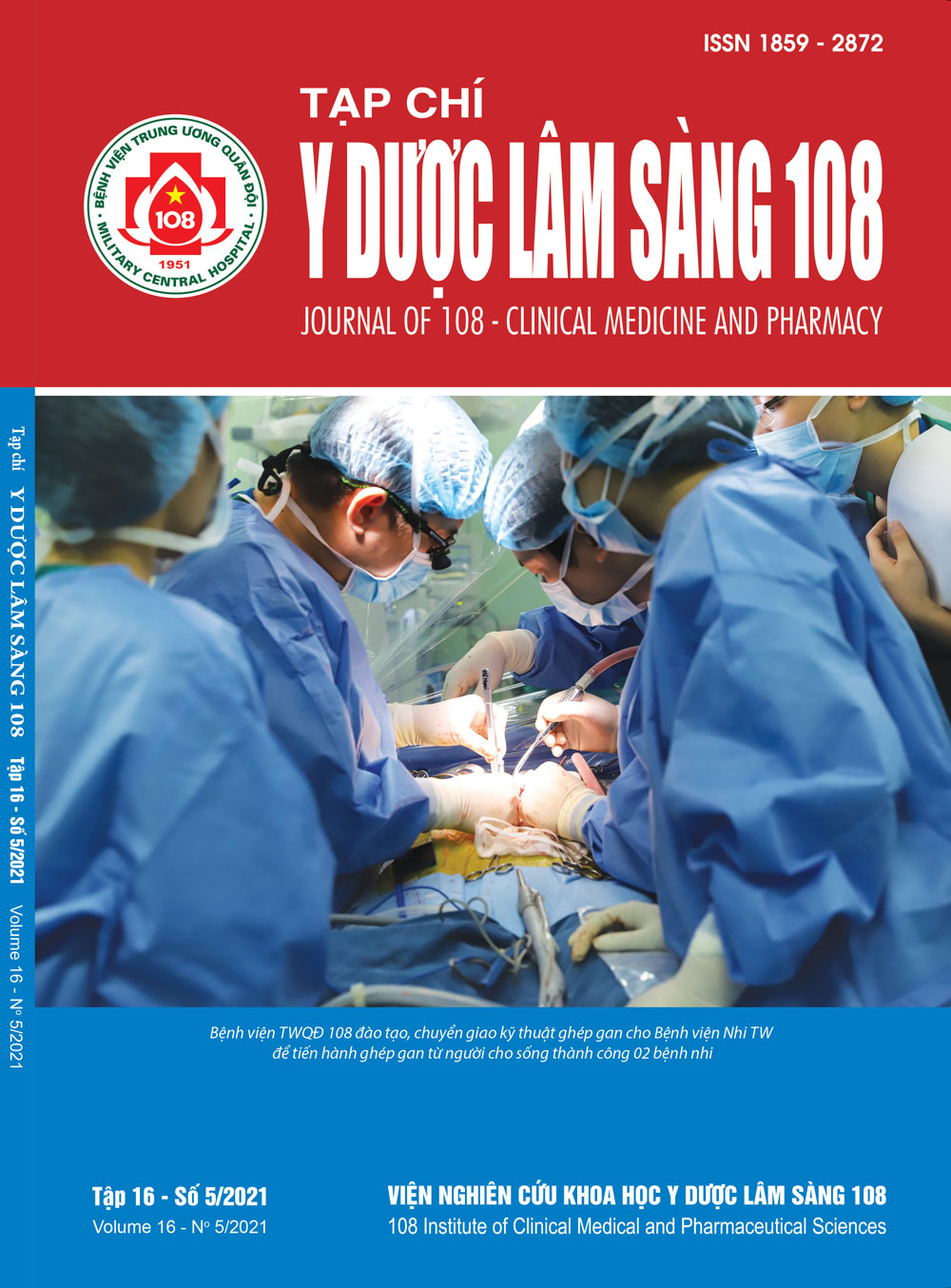Ganglioneuroma presenting as an adrenal incidentaloma: A case report
Main Article Content
Keywords
Abstract
Ganglioneuromas (GNs), benign tumors of sympathetic neuvous systems arising from the neural crest tissue and are most commonly located in the posterior mediastinum and retroperitoneum. They are rarely found in the adrenal gland, asymptomatic and incidentaloma in almost cases. Although GNs is benign but it can grow and cause compression, so surgery is the optimal treatment method. It is complicated to diagnose exactly before surgering, difficult distinction with adrenal cortical carcinoma. Postoperatively, there is no need for adjuvant therapy in patients with adrenal GNs and their progonist is excellent. We report the clinical case describing adrenal ganglioneuroma, without exact diagnosis and the exception of adrenal cortical carcinoma. Postoperation, the patient has a good recover. Histopathological examination is required in order to confirm the diagnosis of GNs. Conclusion: Adrenal ganglioneuroma is benign, occurs rarely and preoperative diagnosis is difficult, thus surgery is the gold standard for the treatment and histopathological examination is the mainstay of diagnosis.
Article Details
References
2. Sherlock M, Scarsbrook A, Abbas A et al (2020) Adrenal incidentaloma. Endocrine reviews 41(6): 775–820.
3. Fassnacht M, Arlt W, Bancos I, Dralle H, Newell-Price J, Sahdev A et al (2016) Management of adrenal incidentalomas: European society of endocrinology clinical practice guideline in collaboration with the european network for the study of adrenal tumors. European journal of endocrinology 175(2): 1-34.
4. Mylonas KS, Schizas D, Economopoulos KP (2017) Adrenal ganglioneuroma: What you need to know. World journal of clinical cases 5(10): 373-377.
5. Li J, Yang CH, Li LM (2013) Diagnosis and treatment of 29 cases of adrenal ganglioneuroma. European review for medical and pharmacological sciences 17(8): 1110-1113.
6. Majbar AM, Elmouhadi S, Elaloui M, Raiss M, Sabbah F, Hrora A, et al (2014) Imaging features of adrenal ganglioneuroma: A case report. BMC research notes 7: 791.
7. Vural V, Kilinc EM, Saridemir D, Gok IB, Huseynov A, Akbarov A et al (2020) Association between tumor size and malignancy risk in hormonally inactive adrenal incidentalomas. Cureus 12(1): 6574.
8. Cichocki A, Samsel R, Papierska L, Roszkowska-Purska K, Nowak K, Jodkiewicz Z et al (2017) Adrenal tumour bigger than 5cm - what could it be? An analysis of 139 cases. Endokrynologia Polska 68(4): 411-415.
9. Dong A, Cui Y, Wang Y, Zuo C, Bai Y (2014) 18F-FDG PET/CT of adrenal lesions. AJR American journal of roentgenology 203(2): 245-252.
10. Miyake M, Tateishi U, Maeda T, Arai Y, Seki K, Hasegawa T et al (2006) A case of ganglioneuroma presenting abnormal FDG uptake. Annals of nuclear medicine 20(5): 357-360.
11. Spinelli C, Rossi L, Barbetta A, Ugolini C, Strambi S (2015) Incidental ganglioneuromas: A presentation of 14 surgical cases and literature review. Journal of endocrinological investigation 38(5): 547-554.
 ISSN: 1859 - 2872
ISSN: 1859 - 2872
